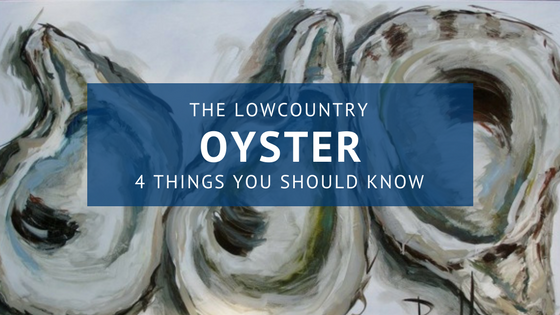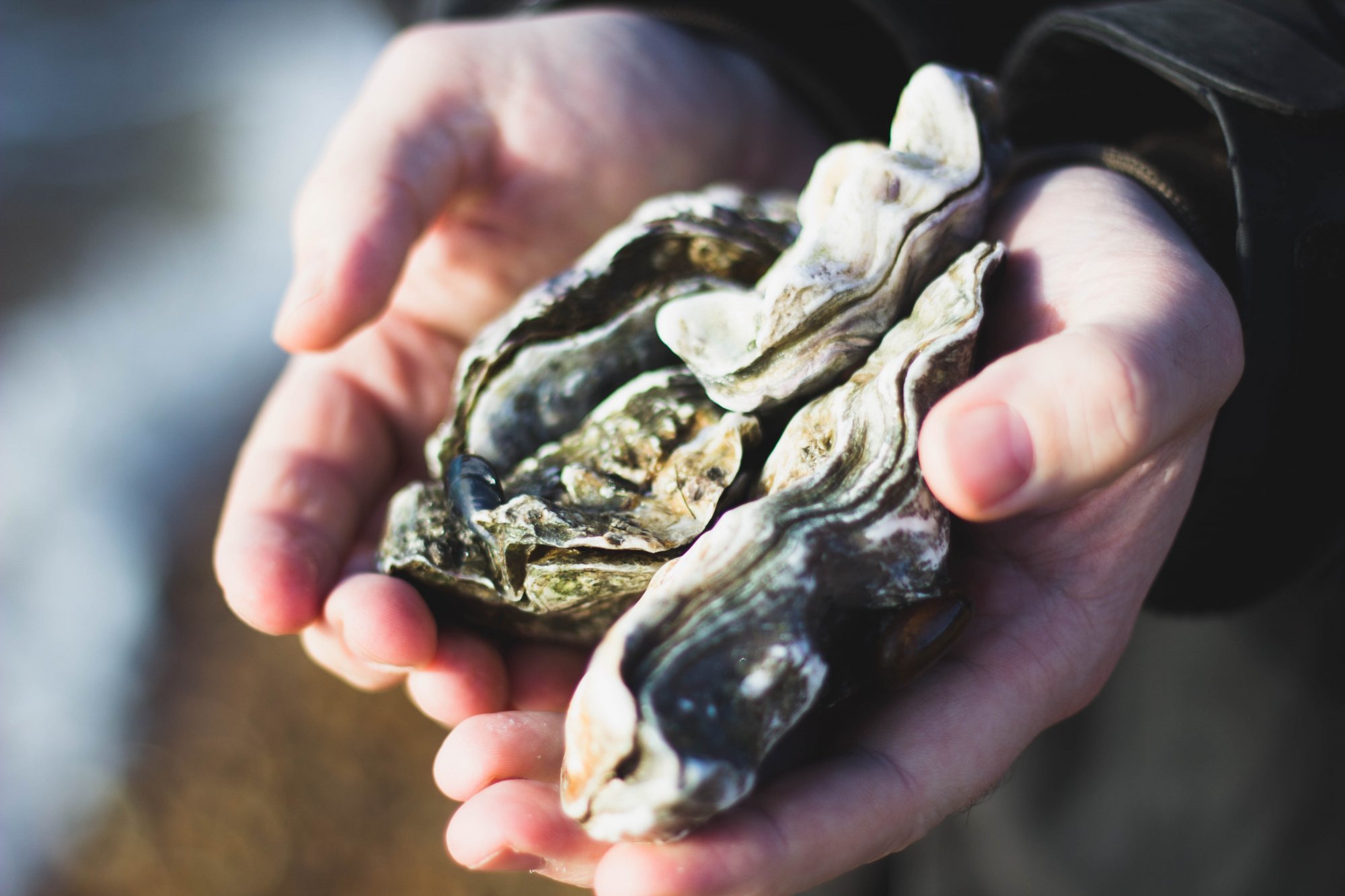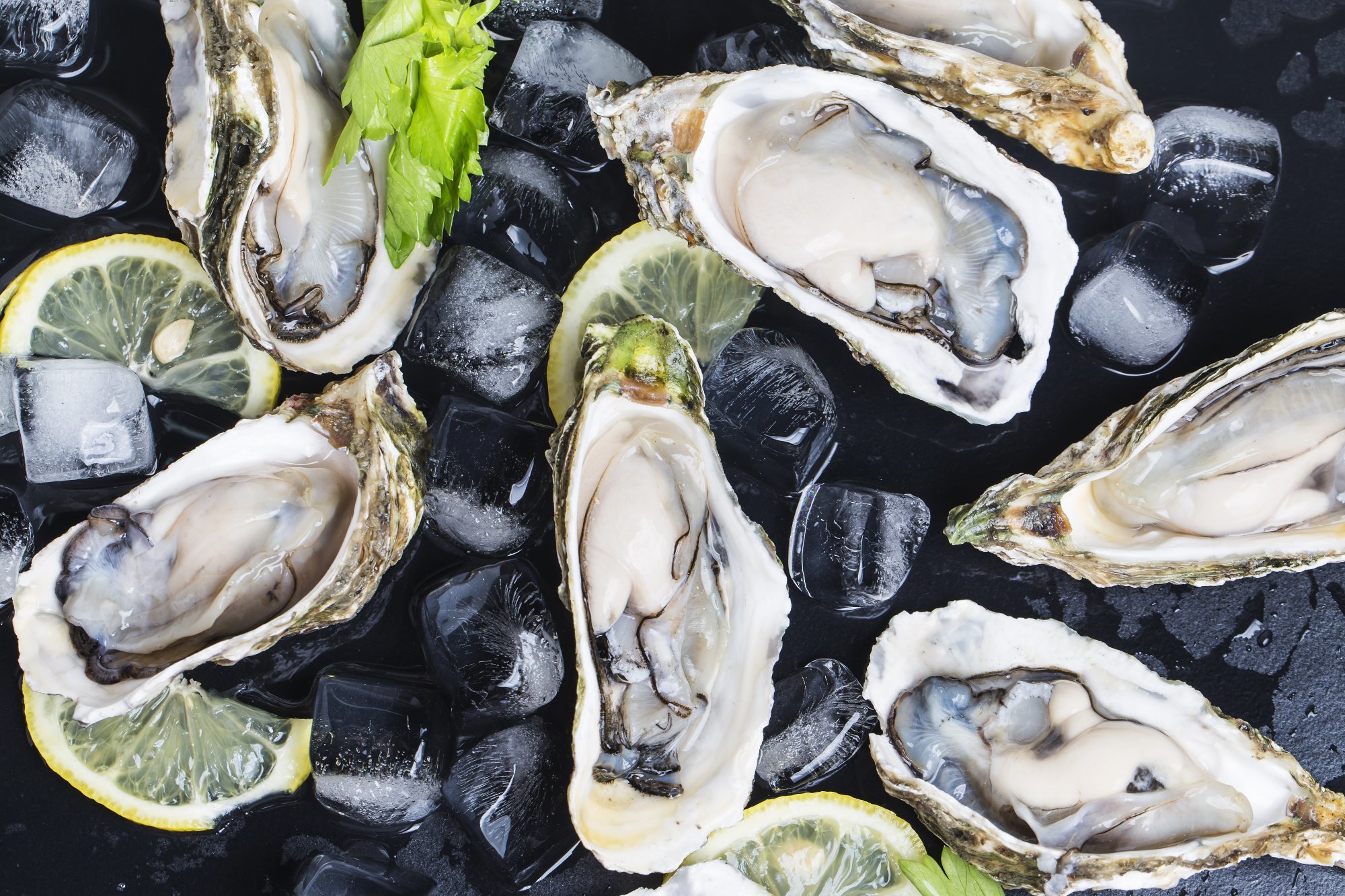
Artwork and photo by Bellamy Art
January puts us right smack dab in the middle of the famed “R” months, those being the finest months of the year for enjoying local oysters.
Here is our handy-dandy guide to the Lowcountry’s signature seafood, the delectable oyster.
They have more in common than you would think
Here in the Lowcountry if you ask what kind of oysters we have, our answer will be, “the best.” But just because they are the best does not mean that they are the only oysters, right? You have no doubt heard of Blue Point oysters. What about Malpeque, Wellfleet or Blue Soleil?
Ever wondered what the difference is between all of them?
 The answer may be surprising. Biologically, it is nothing. They are all varieties of the species Crassostrea virginicas, a.k.a the humble East Coast Oyster. The variations between them come from a host of factors: average water temperature, minerality, salinity and average tide.
The answer may be surprising. Biologically, it is nothing. They are all varieties of the species Crassostrea virginicas, a.k.a the humble East Coast Oyster. The variations between them come from a host of factors: average water temperature, minerality, salinity and average tide.
In fact, part of what makes our area’s oysters the best is our extreme tides. Unlike many other varieties, Lowcountry oysters spend much of their time above water when the tide is low. This, coupled with the unique briny salinity of our area’s waterways (particularly the May River) makes for a one-of-a-kind salty/savory flavor profile that few others can match.
They powered our state
As far back as you can see in our history, you will find the oyster playing a huge role in South Carolina. The most visible reminders we have of the Paleo Indians who once called Hilton Head Island home are the massive shell rings they left behind. Scholars are split as to whether the rings hold any ritualistic significance or if the Indians just happened to discard their shells in a ring around camp, but either way, they clearly went through some oysters.
Fast forward a few centuries, and you will find oysters playing a huge role in the antebellum period of South Carolina’s history. The structures from that period were largely made from a material called tabby, which was composed of oyster shells. Once again, we see these bivalves playing a large role in our history.
But perhaps no period in South Carolina history owes as much to the oyster as the early 20th century, the “Heyday of the Canner.” During the period of time from around 1900-1945, the oyster industry was one of the state’s biggest industries. At its peak in the late 20s and early 30s, oystering accounted for up to 3,500 jobs with 27 shucking houses lining the shore up and down the ocean.
Today, Bluffton Oyster Factory is the last of the old shucking houses, the only reminder of an industry that once powered South Carolina.
Locals are now farming them
For centuries, oysters have been more or less harvested the same way – you find a bed with oysters on it, you pull them off the bed.
But modern science has given rise to a new breed of oysterman – one who farms oysters from seed, carefully cultivating them under precise conditions in pursuit of the perfect single oysters. While most oysters are served in large clumps, with younger oysters growing on the shells of older oysters, this unique method of oyster farming allows each oyster to grow independently, making for a perfect oyster on the half shell.
This method involves individual seeds, which are grown to around 2-3 mm in a hatchery. These seeds are planted inside a crab trap, surrounded by a mesh material to ward against predatory creatures like boring sponges as well as against spat (essentially wild-grown oyster seeds). They will grow their entire lives inside this enclosure, reaching a full 360 degrees of plumpness and making for one delicious oyster.
You can try some of these locally farmed oysters at Hudson’s Seafood, where owner Andrew Carmines serves the oysters he farms via his company Shell Ring Oyster Company, as well as any restaurant you see offering oysters from May River Oysters.
They are best served raw
OK, this is less a “fact” and more “an opinion,” but it is one that is backed up by many an oysterman.
 You make like your oysters steamed, fried, broiled, baked or smoked, but ask any oysterman and they will tell you the best way to eat them is fresh out of the water, with an oyster knife in one hand and salt water up past your knees.
You make like your oysters steamed, fried, broiled, baked or smoked, but ask any oysterman and they will tell you the best way to eat them is fresh out of the water, with an oyster knife in one hand and salt water up past your knees.
Which brings us to shucking – now there are many ways to shuck an oyster, with each claiming to be “the best.” For our money, the best way to shuck an oyster is to start at the point, where the oyster shell forms a sort of hinge. Hold the oyster with the flatter side up, get the point of your shucking knife into that hinge, and twist. That should open the whole thing enough that you can gently work your knife around the seam, easing it open as you go.
Bon Appetit!
Posted by Charter One Realty on

Leave A Comment